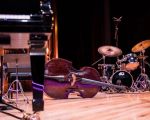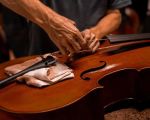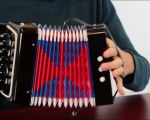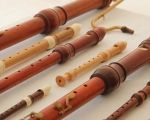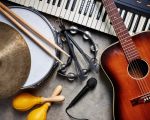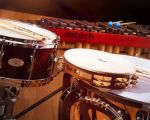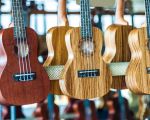- 1. The Origins of Blues Music
- 2. Key Instruments in Early Blues
- 3. The Role of the Guitar in Early Blues Music
- 4. The Harmonica in Early Blues Music
- 5. Bass and Percussion in Blues Music
- 6. Evolution of Blues Instruments
1. The Origins of Blues Music
Blues music is one of the most influential genres in American music history, known for its raw emotion, soulful melodies, and heartfelt lyrics. Emerging in the late 19th century in the Deep South, blues music was largely shaped by African American communities and the hardships they endured. While the sound of blues was diverse and regionally distinct, early blues music was rooted in African traditions, combining elements of spirituals, work songs, and folk music.
As blues music evolved, it adopted a combination of instruments that would come to define its signature sound. The combination of instruments used in early blues music was often simple but effective, creating a distinctive, melancholic sound that resonated with listeners. In this article, we’ll explore the instruments that were essential in the development of early blues music and how these instruments shaped the genre's history.
2. Key Instruments in Early Blues
Early blues music was built around a few key instruments that worked together to create its unique sound. These instruments were often chosen for their availability, affordability, and the expressive capabilities they offered to musicians. While the combination of instruments used in early blues varied, several instruments played a pivotal role in shaping the genre:
2.1. Guitar
The guitar became the cornerstone of early blues music. It provided a rhythmic foundation while also allowing for expressive solos and melodic improvisation. Acoustic guitars, particularly the resonator guitar, were common in the early blues scene. The blues guitar often featured a combination of strumming, fingerpicking, and slide techniques, allowing musicians to create emotive sounds that reflected the feelings of longing, sorrow, and joy.
2.2. Harmonica
The harmonica, or "blues harp," was another important instrument in early blues music. Small and portable, the harmonica allowed blues musicians to accompany themselves while traveling and performing. The instrument was often played with a distinct bending of the notes, which added to the emotional intensity of the music. The harmonica’s high-pitched, wailing sound became synonymous with the blues, and it was used to convey feelings of pain and yearning.
2.3. Piano
The piano played a crucial role in shaping blues, especially in urban areas. While it wasn’t as prevalent in rural blues, it became central to the development of the genre as it moved into cities like Chicago. Early blues pianists would often use the instrument’s 88 keys to replicate the vocal lines, adding depth and color to the music. The boogie-woogie style, which is heavily influenced by blues, became popular through piano performances.
2.4. Double Bass
The double bass, also known as the upright bass, was used in early blues music to provide a deep, resonating bassline. The bass played a supportive role in the rhythm section, providing the foundation for the melodic elements of the guitar and harmonica. The use of the double bass in blues led to the genre’s later development into other forms, including jazz and rock 'n' roll.
2.5. Drums and Percussion
While drums were often absent in the earliest forms of rural blues, they began to be incorporated into the genre as it evolved. Percussion instruments, like the washboard or tambourine, were commonly used in the early blues as part of a makeshift rhythm section. The addition of drums in later urban blues performances provided a fuller, more driving rhythm, helping to transform the genre into a danceable, lively form of music.
3. The Role of the Guitar in Early Blues Music
The guitar is arguably the most iconic instrument in blues music, and it played an especially critical role in early blues performances. Whether it was a single performer accompanying themselves on an acoustic guitar or a full band with multiple guitars, the guitar became the focal point of blues music.
In early blues, musicians like Robert Johnson, Blind Lemon Jefferson, and Son House mastered the art of bottleneck or slide guitar, using a metal or glass object to slide up and down the neck of the guitar, creating a haunting, resonating sound. This technique allowed guitarists to mimic the human voice and express deep emotional nuances, such as sorrow and yearning, which were central to blues music.
Moreover, the guitar was versatile, providing both rhythm and lead parts in a performance. It could create the driving rhythmic grooves that made blues music infectious and, at the same time, serve as an expressive solo instrument for improvisation and storytelling. The guitar's unique ability to blend both harmonic and melodic elements made it indispensable in early blues music.
4. The Harmonica in Early Blues Music
The harmonica, with its portability and expressive sound, became a key instrument in the early blues scene, especially for solo performers. Often played in combination with the guitar, the harmonica added an additional layer of emotion to blues music. Played by inhaling and exhaling air through the instrument, blues harmonica players would use bending techniques to alter the pitch of the notes, creating a sound that was both plaintive and powerful.
The harmonica’s role in early blues music was not only to complement the guitar but also to act as a voice of its own. Harmonica players would frequently engage in call-and-response patterns with guitarists, with the harmonica echoing or responding to the guitar’s melody. This created a dynamic interaction between the two instruments, giving blues music a unique rhythm and depth.
5. Bass and Percussion in Blues Music
As blues music evolved from its rural roots to the urban sound that would later influence rock and jazz, bass and percussion began to play a larger role in shaping its rhythm and energy. The bass, particularly the double bass, provided a deeper foundation to blues music, complementing the guitar’s melody and the harmonica’s high notes with its low-frequency resonance. The driving pulse of the bass helped propel the rhythm section, giving the music a solid, grounded feel.
Percussion instruments, such as the washboard, tambourine, and eventually the drum set, were used in early blues to accentuate the rhythm and add a sense of movement to the music. Drums, especially in the urban blues, brought a more energetic and danceable quality to the music, paving the way for the incorporation of blues into the larger music landscape.
6. Evolution of Blues Instruments
Over the decades, the instruments used in blues music evolved alongside the genre itself. As blues transitioned from rural areas to urban centers like Chicago, new instruments were incorporated, and technological advancements also played a role. Electric guitars, bass guitars, and full drum kits began to replace the more rudimentary acoustic setups, leading to the birth of electric blues and, eventually, rock ‘n’ roll.
Despite these changes, the foundational combination of instruments, particularly the guitar and harmonica, remains at the core of blues music today. The ability of these instruments to convey deep emotion, combined with their unique sounds, continues to make them central to the blues experience. The evolution of blues instruments has allowed the genre to expand, but it remains deeply rooted in the combination of these early instruments that defined its sound.
If you're interested in exploring blues music further or learning about the instruments that shaped it, check out Beat Trigger for a variety of resources and music recommendations that can enhance your blues experience.


